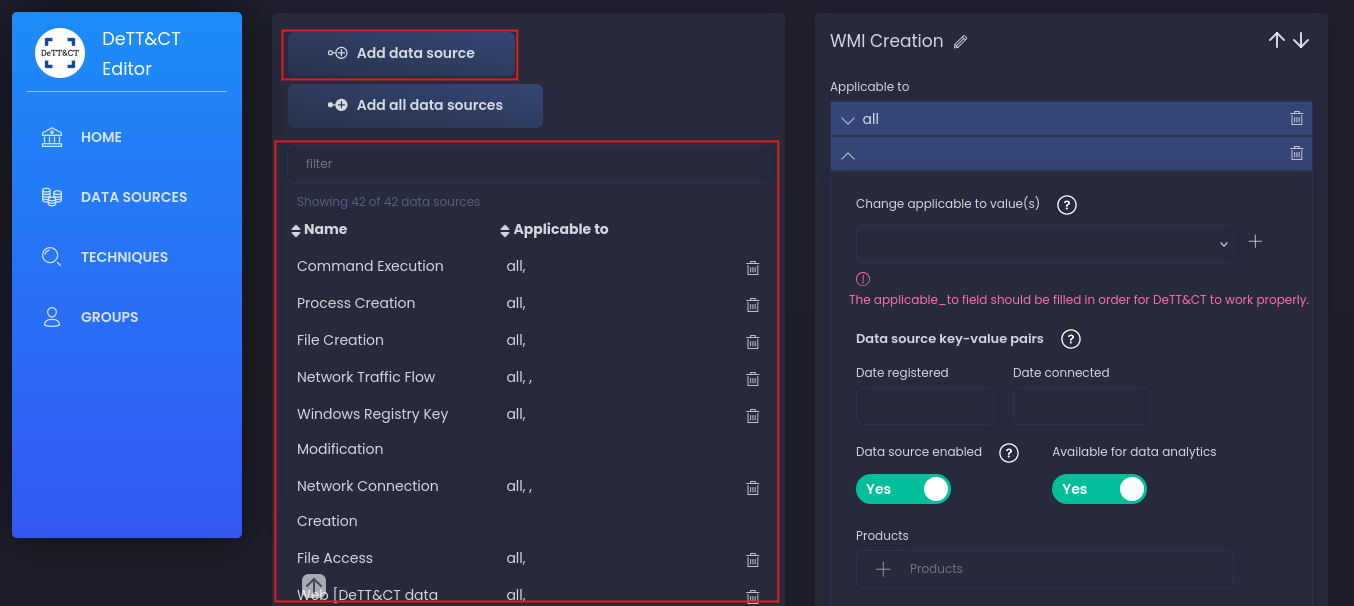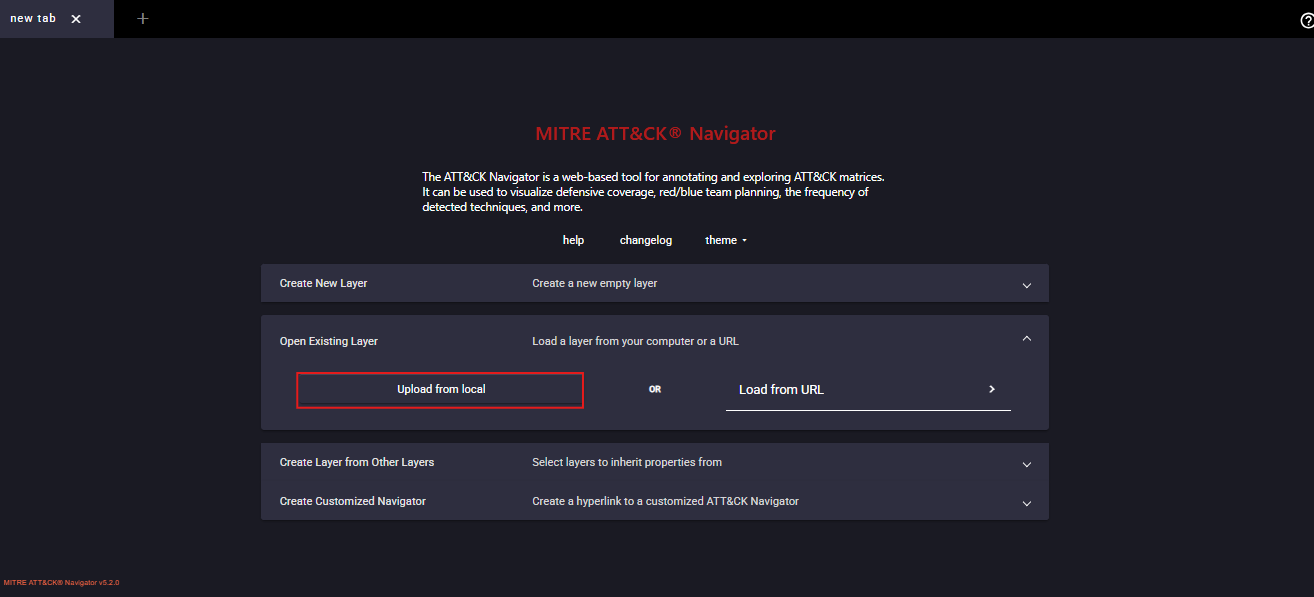Visibility Heatmap
Building on the Attacker Heat Map
After understanding how an Attacker-Heatmap helps visualize threat actor behavior across different MITRE ATT&CK techniques, the next step is developing a visibility-Heatmap.
While the attacker heat map focuses on what the threat actor does, the visibility heat map focuses on what you can actually see and detect in your environment.
It highlights where your current detections are strong, weak, or completely missing, helping identify blind spots in your defensive coverage.
From there, prioritization becomes essential. Not every technique carries the same risk, so security teams must decide which techniques to improve first based on threat intelligence and detection gaps.
Data Sources
we will assume we collect the data-source from the client and work with this data source to complete the example on it.
Data Source Platform(s)
-----------------------------------------------------------------------------------------------------------------
Command Execution Linux, Windows
Process Creation Linux, Windows
File Creation Linux, Windows
Network Traffic Flow Network
Windows Registry Key Modification Windows
Network Connection Creation Linux, Windows, Network
File Access Linux, Network, Windows
Web [DeTT&CT data source] Windows, Linux, Network
Logon Session Creation Linux, Windows
Script Execution Windows
User Account Authentication Linux, Windows
Windows Registry Key Creation Windows
Process Access Linux, Windows
Internal DNS [DeTT&CT data source] Windows, Linux, Network
Active Directory Object Modification Windows
User Account Modification Linux, Windows
File Deletion Linux, Network, Windows
Service Creation Linux, Windows
Logon Session Metadata Linux, Windows
Service Metadata Linux, Windows
Windows Registry Key Access Windows
Active Directory Credential Request Windows
User Account Creation Linux, Windows
Scheduled Job Creation Linux, Windows
WMI Creation Windows
Active Directory Object Creation Windows
Service Modification Linux, Windows
Group Enumeration Windows
Network Share Access Linux, Windows
Firewall Rule Modification Linux, Windows
Windows Registry Key Deletion Windows
Drive Creation Linux, Windows
Active Directory Object Access Windows,
Scheduled Job Modification Linux, Windows
Firewall Disable Linux, Windows
User Account Deletion Linux, Windows
Process Termination Linux, Windows
Scheduled Job Metadata Linux, Windows
Active Directory Object Deletion Windows
Group Modification Windows
Firewall Enumeration Linux, Windows
what’s DeTT&CT tool and how we can Install it
DeTT&CT is a framework used to map collected telemetry (data sources) to MITRE ATT&CK techniques, helping identify coverage and detection gaps.
we can just use the following lines two download and install:
git clone https://github.com/rabobank-cdc/DeTTECT
pip3 install -r requirements.txt
Also, consider that you can open the editor locally by the python tool using the following command:
python3 dettect.py editor
Prepare data for DeTT&CT
We’ll transform the client’s collected data source table into a data-sources-new.yaml file using the DeTT&CT Editor interface.
We can add data Manually by the DeTT&CT Web Editor ( or just uploud the yaml file)
1- Open the DeTT&CT Editor in your browser:
2- Click Add Data Source.
3- Enter the data source name (Process Creation, Network Traffic Flow, User Account Authentication,..).
4- Select the platform Windows, Linux, Network, or Cloud.
5- Repeat for all the data sources you’ve collected from the client.
6- When done, click Export YAML to download the generated configuration file.

MITRE ATT&CK Navigator
then convert the data to json file to be able to uploud it on MITRE ATT&CK Navigator using this command:
python3 dettect.py ds -fd '/home/kali/Downloads/data-sources-new.yaml' -l
ds - tells DeTT&CT you want to work with data sources.
-fd - '/path/.yaml' specifies your input YAML (your collected data sources).
-l - prints the list of all MITRE ATT&CK Data Sources + related Techniques that match what you provided.

Once you visualize the JSON in MITRE Navigator, you’ll get a color-coded visibility heat map that shows which ATT&CK techniques your current data sources can detect and more importantly, which ones you can’t.

Building a Visibility Heat Map bridges the gap between theory and operational defense. By combining attacker behaviors (from the attacker heat map) with your telemetry reality (from DeTT&CT analysis), you create a strategic detection roadmap.